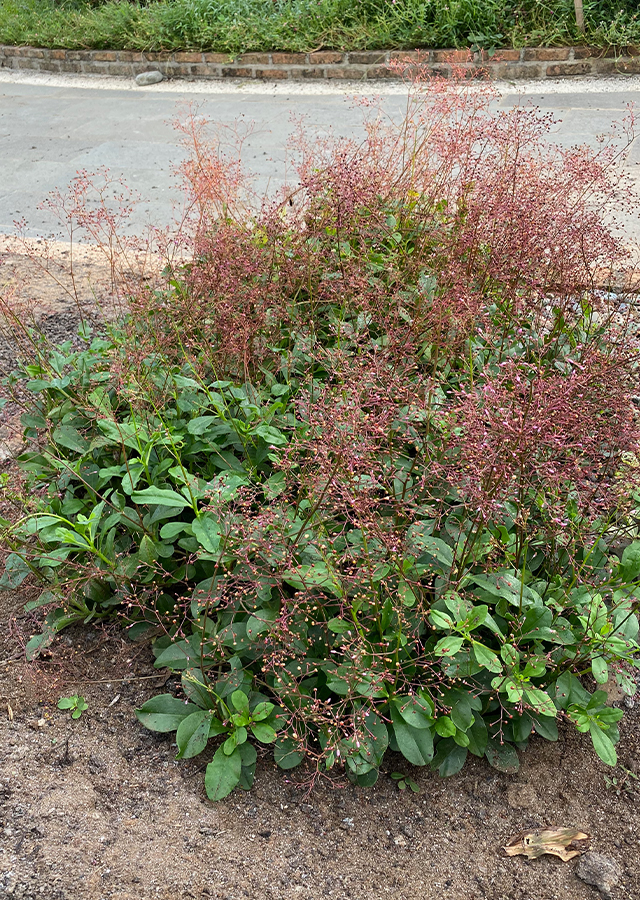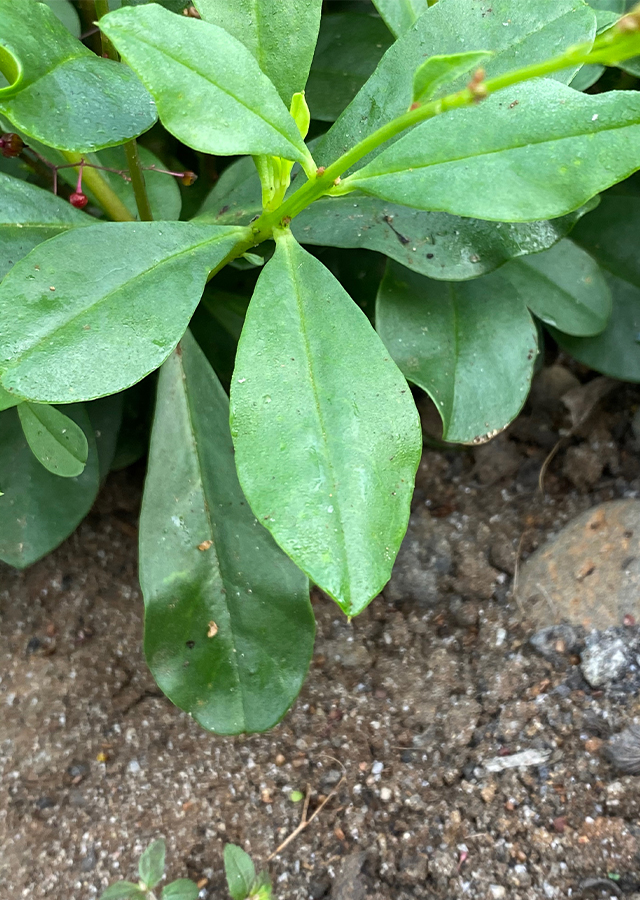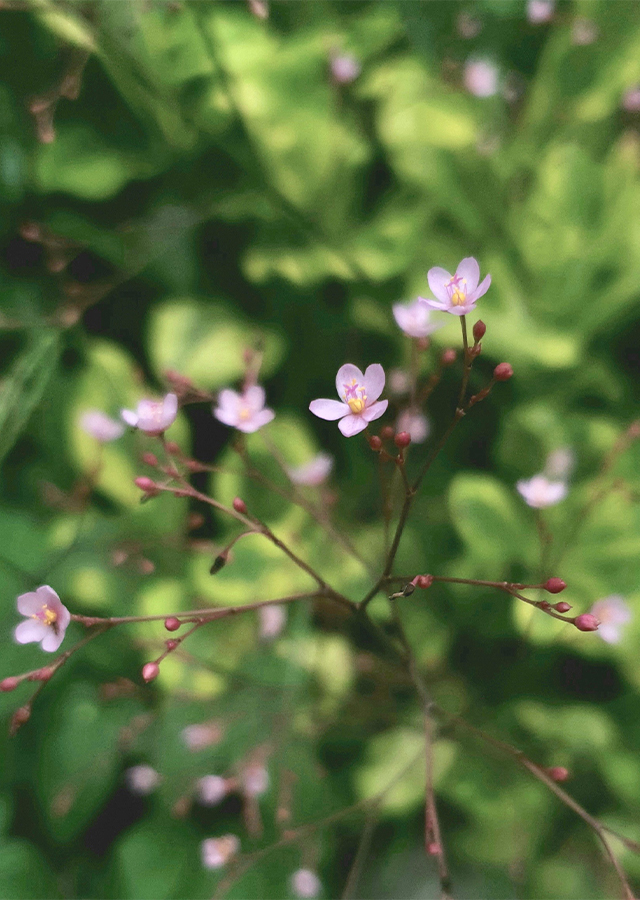Jewels of Opar
Talinum paniculatum (Jacq.) Gaertn.
Talinaceae
Location in our garden
Principal



Synonym
Calandrinia andrewskii H.Vilm.
Claytonia patens Kuntze
Claytonia reflexa (Cav.) Kuntze
Habitus
Herbaceous. An erect, herbaceous, perennial plant, grows up to 1 m tall
Part Used
Leaves
Roots
Growing Requirements
Full Sunshine
Need Shade
Drought Resistant
Habitat
Shrublands
Grassland
Overview
Jewels of Opar (a name borrowed from the title of the novel Tarzan and the Jewels of Opar by Edgar Rice Burroughs) is native to tropical America. The plant is also cultivated in tropical West Africa, Cuba and South-East Asia as a vegetable, in Thailand for its medicinal uses and in various parts of the tropics as an ornamental.
Vernacular Names
Maria gorda (Brazilian), Tu ren shen (Chinese), Herbe onze heures (French), Ginseng halus (Malay), Lingua de vaca (Portuguese), Rama del sapo (Spanish), Som (Thai).
Agroecology
This plant grows in moist or wet fields or thickets, often in waste ground, sometimes in cultivated fields; usually at low elevations, but ascending to 2,400 m. Grows best in full sun, but plants are tolerant of some shade. Prefers a well-drained, moist soil rich in organic matter. Established plants are drought tolerant.
Morphology
- Roots - swollen and fleshy.
- Stems - succulent, slightly woody at the base, dark purple to brownish black.
- Leaves - in whorls, obovate-lanceolate, flat, glossy and bright green.
- Flowers - in terminal panicles, small and pink colored.
- Fruits - a globose, glossy, dark red capsule, 3 to 5 mm in diameter, many-seeded.
- Seeds - lenticular to reniform, c. 1 mm long, smooth or tuberculate, shining black.
Cultivation
- By seeds - sown in the field under light shade or in a nursery. Seedlings appear after 1 week and should be transplanted within 5 weeks.
- By cuttings - taken from slightly woody stems, from which tops and leaves are removed. They require ample watering. Cuttings are planted at a density of about 5 per m2. The crop responds well to fertilizer.
Chemical Constituents
Phytosterol, saponins, flavonoids, tannins, potassium nitrate, heneicosanoic acid, nonacosyl nonacosanoate, 3-O-β-D-glucosyl-β-sitosterol, 3-O-acethyl-aleuritolic acid, stigmasterol, pentaciclyc triterpene.
Traditional Medicinal Uses
Medicinal Uses
- It is used as an antiviral for herpes and for the treatment of inflammatory skin diseases. It may be helpful with Parkinson's disease, amyotrophic lateral sclerosis, heart disease and cholesterol reduction.
Traditional Uses
- In Asian traditional medicine, it is extensively used as a reproductive tonic.
- Roots are used as substitute for ginseng to regulate menses; also, for cough, general debility, diarrhea.
- In traditional Chinese medicine, the herb is used as a substitute for Ginseng.
- In Indonesia, used for liver and kidney problems.
- In Brazil, plant used to treat inflammatory conditions. Used to treat bad smelling urine, enuresis, irregular menses, gastrointestinal disorders, general debility. Leaves used topically in the treatment of edemas, skin inflammation, minor scratches, cuts, and scrapes. Decoction of roots used to treat scurvy, arthritis, stomach inflammation, and pneumonia.
- In Thailand, it is popular as herbal recipes for enhancing vitality, treating diabetes, inflammatory skin problems, GI troubles, and general weakness. It is used to induce lactation and restore uterine functions postpartum. The swollen root used as aphrodisiac.
Part Used
Reference Sources
- Fern, Ken. (2019). Useful Tropical Plants Database. Talinum paniculatum (Jacq.) Gaertn. http://tropical.theferns.info/viewtropical.php?id=Talinum+paniculatum on 29-09-2020.
- Mosango, M. (2015). Pl@nt Use. Talinum paniculatum (PROTA). https://uses.plantnet-project.org/en/Talinum_paniculatum_(PROTA) on 29-09-2020.
- Philippines Medicinal Plants. (No date). Talinum paniculatum (Jacq.) Gaertn. http://www.stuartxchange.org/Talinum.html on 29-09-2020.


